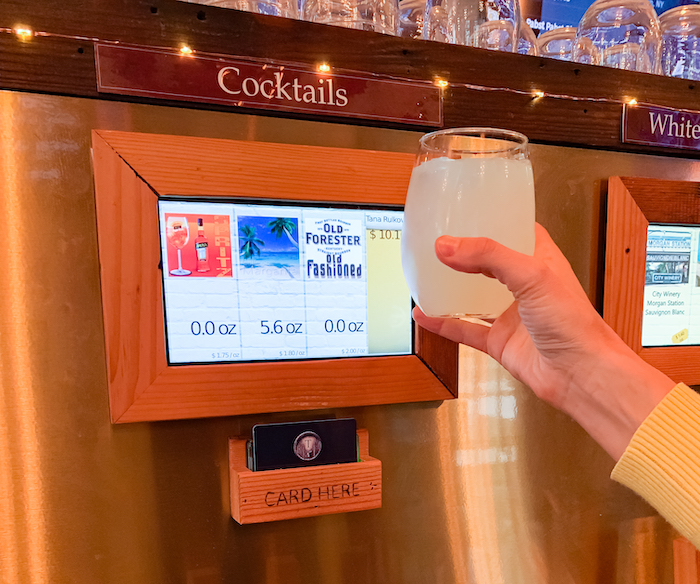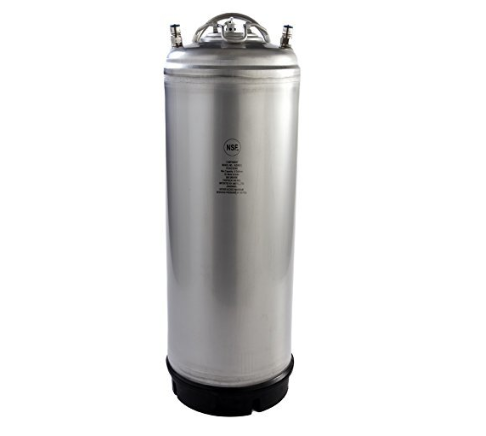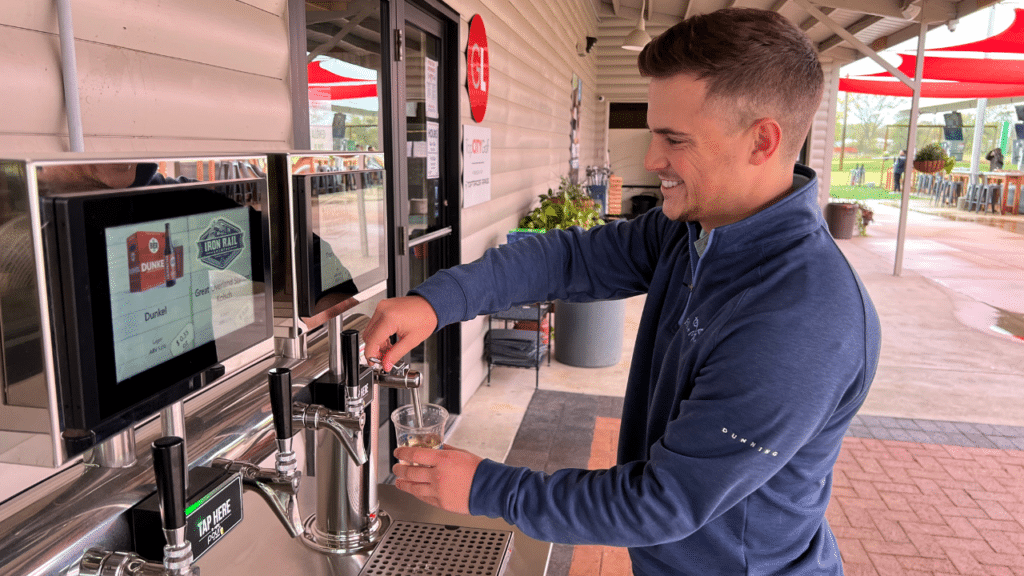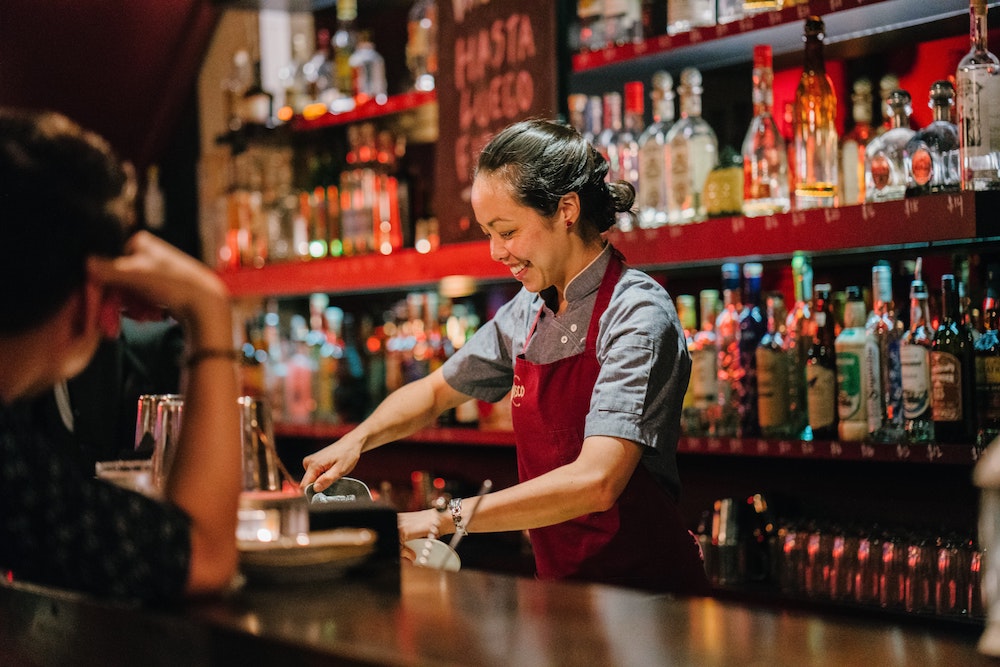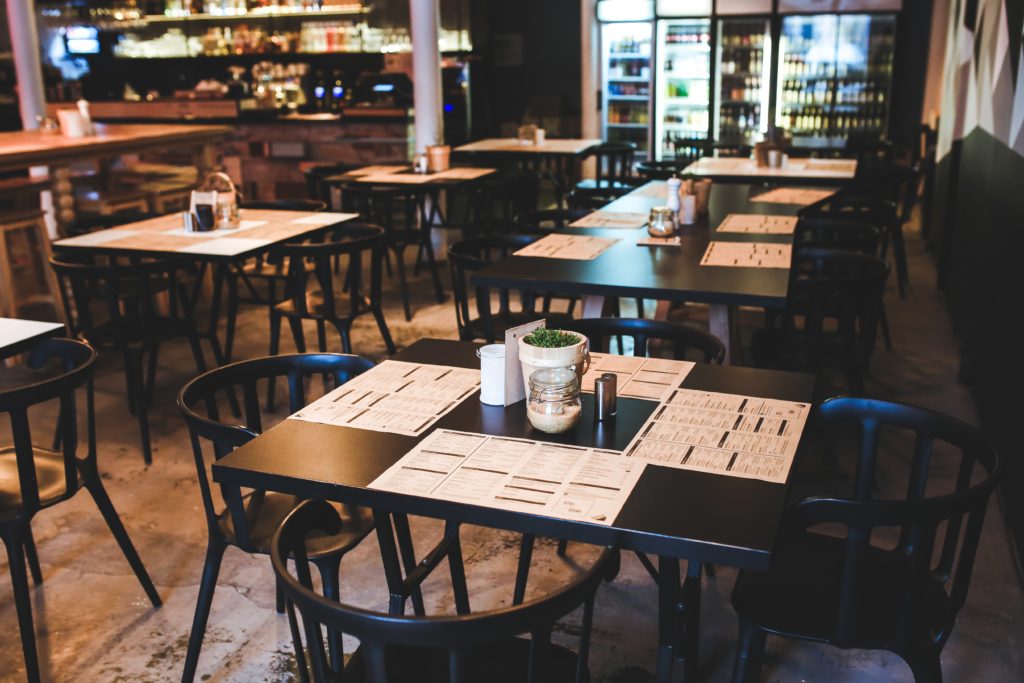How to Execute Cocktails on Tap
If you can keg it, PourMyBeer’s technology can pour it! That’s our go-to slogan, but many people don’t realize exactly how many types of drinks you can keg.
It is common to see beer, wine, cider, cold brew, and kombucha on self-pour taps, but until recently, cocktails were often overlooked. Cocktails are traditionally prepared one at a time but can be kegged with surprising ease, and the benefits of self-pour technology apply just as strongly.
Getting cocktails set up on self-pour taps involves most of the same steps and similar equipment to a beer or wine setup, but there are a few nuances to keep in mind. Keep reading to see some of the benefits you’ll get when serving cocktails on tap, as well as details about the process, equipment you’ll need, and recipes to create batched cocktails!
If you’d like to access a book full of batched cocktail recipes, click the button below! Our cocktail book includes 15+ recipes for delicious batched drinks! Whether you’re looking to add margaritas or fruit crushes to your beverage offerings, we’ve got all the recipes you’ll need to add something fun for your customers!
Everything you need to know about cocktails on tap
Our name can be misleading at times, but don't let it fool you! Simply put, if it is a liquid that can be kegged, our tech can pour it! Check out how Flourish, in Oak Park, IL, makes its cocktails.
Why Should Bar Owners Care About draft cocktails?
- Cost Reduction – No more heavy, inconsistent pours. Each cocktail will cost you the same amount every time.
- Increased Efficiency – Rather than having to mix a single cocktail every time it’s ordered, you can mix an entire batch at once. This allows for massively reduced labor costs.
- Very Little Waste – Every tenth of an ounce is tracked. No free shots are given away, and drink tabs can’t be “forgotten” or incorrectly entered into the POS.
- Product Quality & Consistency – Tapped cocktails deliver consistent taste, unlike cocktails mixed individually by different bartenders. Cocktails from self-pour taps will have the same taste every time the guest refills their glass.
- Simplified Inventory – Say goodbye to the days of dealing with hundreds of bottles everywhere! Keep track of a few kegs at a time and simplify your inventory.
Hear from an experienced self-pour operator who has seen great success serving cocktails on tap below!
"We opened our third PourMyBeer location in the Spring of 2021. We started with three cocktails on tap - Moscow Mule, Bourbon Ginger Cider, and, of course, a Margarita. During the first month, we sold 27,553 ounces of self-pour cocktails. That is over 9,000 ounces per tap or approximately 500 ounces a day per cocktail tap. Not sure more justification is needed. While cocktails are on a limited number of taps in our locations, they are a powerful revenue driver in many ways. The cocktail options give customers other options. This mitigates the 'I want something besides beer' friend from convincing the group to go somewhere else. Therefore driving (or saving) revenue."
- Jim Wright, Director of Operations at Stanley Beer Hall and Operations & Technology Consultant at Malcolm Yards
Why will your customers prefer self-pour cocktails?
- Convenience – Customers can now buy any cocktail by the ounce, whenever they want, without having to wait for a bartender or waiter.
- Cost – Customers aren’t constrained to ordering a whole glass of a cocktail they might not like.
- Consistent Taste – Bartenders make drinks the way they like them, which is fair, but this doesn’t provide consistency. With self-pour technology, customers receive the same tasty cocktail every time they pour.
- Easy Sampling – Customers can conveniently sample small amounts of various cocktails on tap without the fear of wasting $12 drinks they don’t like. This provides customers with the freedom to find the beverages they enjoy without paying too much.
- Fun – Guests become the bartender. They engage with each other and discuss which beverages taste the best and why. And the best part is that their happy faces end up on their social media feeds, showcasing your establishment, providing you with free and valuable exposure online.
Want to try kegging for your cocktail bar? Here's the Equipment Needed
If kegging cocktails is a proper fit for your establishment, here’s a look at the equipment you need to get started:
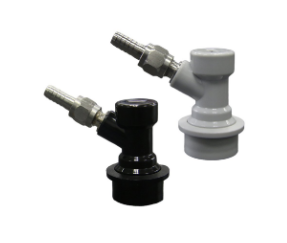
COUPLERS
You’ll also need the couplers that push the gas in and the cocktails out. You can find them on Amazon for around $12.
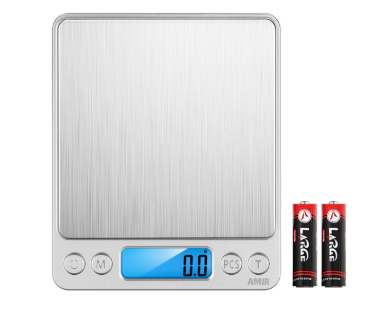
SCALE
We suggest a scale to weigh everything before you put it in the container, you can find it on Amazon for around $13.
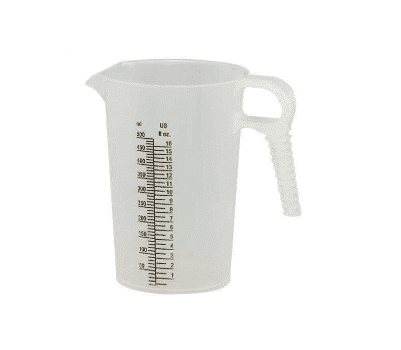
Measuring cup
You should also have a large measuring container, here is one on Amazon for around $14.
Batching Cocktails
Batching cocktails is a very similar process to making a single portion. It takes a few batches of practice to perfect your recipe. Generally, you want to start by multiplying the ingredients and then slightly adjusting the recipe as needed to serve a large crowd. To perfect your recipe, your ingredient ratios need to be slightly adjusted compared to making traditional single cocktails. So keep this in mind and do a few test batches before serving this to your thirsty crowd. You can keg practically any cocktail of choice with the proper care and attention to detail. You can accomplish that goal by adding carbon dioxide or nitrogen, depending on the cocktail, and removing oxygen from kegging tanks. It’s recommended to use nitrogen for nearly all cocktails unless they are carbonated drinks. A general rule of thumb for kegging cocktails is that temperatures need to stay low so that the beverage stays cold.
The Batching Process
A 5-gallon keg holds 640 ounces of liquid. When creating batch recipes, you’ll want to leave a little room to shake the keg regularly to ensure all ingredients remain mixed. The cocktails you keg are up to you. Be creative!
As a general note, try to avoid frozen ingredients or those with a lot of pulp/sediment as this will clog the lines. Once you’ve selected which cocktails you want and you have the recipe for a single drink, you’ll want to convert the recipe to a batch size (example below):
During this video, you'll join Tana Rulkova, VP of Marketing at PourMyBeer, and Jim Wright, Director of Operations at Stanley Beer Hall, batch Moscow Mules. You'll get a step-by-step tutorial of how to perfect this recipe so you can utilize cocktails on tap in your restaurant!
Moscow Mule: 1 Drink
- 2 oz Vodka
- 0.5 oz Lime Juice
- 3.5 oz Ginger Beer
Converted to a Batch of 600 Ounces
- 2 oz x 100 = 200 oz Vodka
- 0.5 oz x 100 = 50 oz Lime Juice
- 3.5 oz x 100 = 350 oz Ginger Beer
While you should tweak every recipe to your liking, make sure it is carefully recorded for future batches, as this will ensure that you maintain consistency.
Now that your cocktail is kegged, you’ll need nitrogen/carbon dioxide tanks and regulators. These tanks will provide the option to serve both still and carbonated cocktails on tap. Depending on the cocktail ingredients, you’ll want to pressurize the keg with either CO2 or N2.
Popular cocktails on self-pour taps
- Paloma
- Mojito
- Gin and Tonic
- Old Fashioned
- Margarita
- Cosmopolitan
- Espresso Martini

Before setting up mixed drinks on tap for a busy night, you’ll want to make sure to shake them to ensure all ingredients are mixed. Another option is buying a keg agitator that does this automatically.
Keep in mind that most cocktails are served cold. Still cocktails will give you room to play with storage temperature, but carbonated ones should remain in a storage location of about 38 degrees Fahrenheit.
You can stabilize drinks with acid blends and remove all CO2 from the keg as well. Once the keg is empty, we recommend using Star-San, the industry standard, to clean the keg before refilling. You can find one here for $17.
Tips and Tricks
Kegged Cocktails Do’s
- Do have an ice machine nearby, preferably at counter height.
- Do offer standard favorites and signature cocktails.
- Do have your staff shake the kegs a few times during the day/night to ensure ingredients are mixed. Alternatively, use a keg agitator.
- Do clean the lines with a professional draft cleaning service at least once a month.
- Do mark the date on which the cocktail was batched on your keg.
Kegged Cocktails Don'ts
- Don’t use ingredients that perish quickly, unless you plan to stay on top of it.
- Don’t use ingredients that contain pulps or solids, as these will clog up the draft lines.
Finally, keep in mind that state standards can differ. Each state has different standards for batched drinks, so do your diligent research. If you’re looking for more specific do’s and don’ts when kegging cocktails (i.e., how to handle garnishes), check out our webinar on How to Execute Different Drinks on Tap. We spoke with industry experts who shared tips on how to profitably and efficiently execute kegged cocktails, wine, cold brew, and more on tap.
Access the recording of the webinar below!
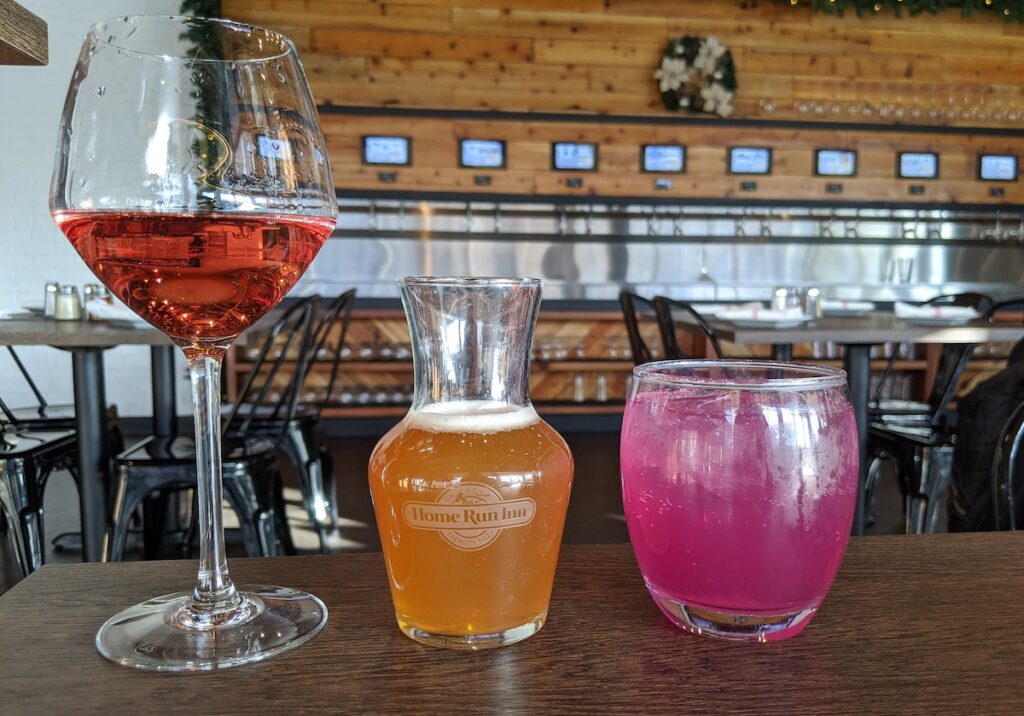
Recipes & Batching Videos
How to Batch A Margarita
During this video, you'll join Tana Rulkova, VP of Marketing at PourMyBeer, and Jim Wright, Director of Operations at Stanley Beer Hall, batch Margaritas. You'll get a step-by-step tutorial on how to perfect this recipe so you can utilize cocktails on tap in your restaurant!
Margarita Recipe
- 5.25 liters of Tequila
- 1.75 liters of Triple Sec
- 6 bottles of Rose’s Lime Juice
- 1 gallon of Apple Juice
5. 40 ounces of pulp-free Orange Juice
6. 375 milliliters of Grand Marnier
7. Add Water
How to Batch a Mai Tai
During this video, you'll join Tana Rulkova, VP of Marketing at PourMyBeer, and Ben Lee, General Manager of Navigator Taproom, as they batch Mai Tais!
Mai Tai Recipe
- 7 liters of Rum
- 2 – 2.5 Liters of Pineapple Rum, White Rum, and Dark Rum
- 1.5 Liters of Triple Sec
- 4. 1.5 Liters of Orgeat
5. 3 Liters of 6% Citric Acid and 4% Malic Acid Solution
6. 1.5 Liters of Simple Syrup
7. 2 Liters of Filtered Water
How to Batch a Bourbon Grapefruit Fizz
Come along with us as Kevin Curley, the owner of RegionAle in Baltimore, MD, teaches us how to batch cocktails. From batching to pouring, you'll get to see the whole process of how Kevin batches and kegs cocktails.
Bourbon Grapefruit Fizz Recipe
- 6 liters of Bourbon
- 3 liters of Grapefruit Juice
- 1 quart of Lime Juice
4. 10 dashes of Bitters
5. 8 liters of Lemon-Lime Juice
Bourbon Ginger Cider Recipe
- 2 – 1.75 bottles of Bourbon
- 1 gallon of Apple Juice
- 14 bottles of Ginger Beer
Double Espressotini Recipe
- 4 liters of Jameson Cold Brew
- 2 liters of Kahlua
- 5 liters of Cold Brew
4. 1 liter of Vodka
5. 1 liter of Vanilla Simple Syrup
Spicy Bees Knees Recipe
- 4 liters of Gin
- 4 liters of Hot Honey
3. 4 liters of pulp-free Lemon Juice
4. 4 liters of Water
Rum Punch Recipe
- 4 liters of Rum
- 1 liter of Grenadine
- 1 liter of pulp-free Mango Juice
4. 1 quart of pulp-free Lime Juice
5. 1 quart of pulp-free Lemon Juice
6. 4 liters of Soda
Learn more on How to Keg Drinks here, or watch the video of our PourMyBeer family member utilizing cocktails on self-pour taps in his 3 self-serve taprooms.
As an operator, you now see how cocktails on tap will reduce costs, increase efficiency, decrease waste, have consistent quality, and leave you with a simpler inventory to handle. Hop on the self-pour revolution trend and start pouring!
Feel free to drop us a line at 312-416-9989 or send us an email at sales@pourmybeer.com!

